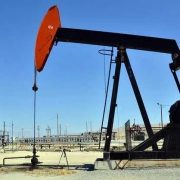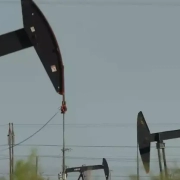Mineral rights and severance tax: What landowners should know
Mineral rights are a valuable and often complex aspect of property ownership. When landowners possess mineral rights, they have the legal authority to extract and profit from the minerals beneath the surface of their land. This can include a variety of valuable resources such as oil, gas, coal, and minerals. However, the extraction of these resources can lead to the imposition of severance taxes, which are levied on the removal of these minerals. In this comprehensive guide, we will explore the world of mineral rights and severance taxes, shedding light on what landowners should know to navigate this intricate landscape.
Mineral rights can significantly impact the financial well-being of landowners, providing opportunities for income generation and wealth accumulation. However, with these rights come the obligations and complexities associated with severance taxes. Understanding the implications of these taxes is vital for landowners looking to maximize their mineral rights while remaining compliant with legal and regulatory requirements.
Understanding Mineral Rights
Mineral rights, also known as subsurface rights, are legal rights that grant the owner the authority to extract and profit from minerals located beneath the surface of their property. These minerals can include a wide range of resources, such as oil, natural gas, coal, metals, and even water.
Landowners may own both the surface and mineral rights to their property, or these rights may be severed. When mineral rights are severed, a different party, such as a mineral exploration company, holds the rights to extract and profit from the minerals.
The Basics of Severance Tax
Severance tax is a tax imposed by state and local governments on the removal or “severance” of minerals or natural resources from the ground. These taxes are typically levied on the producers or extractors of these resources and vary by state and resource type. Severance tax rates are determined by state legislatures and can fluctuate over time based on economic, political, and environmental factors.
Severance tax revenue is often used to fund state and local government operations, including infrastructure development, education, and environmental conservation.
The Impact of Severance Tax on Landowners
Severance taxes can have various effects on landowners, both positive and negative. Understanding these impacts is crucial for landowners to make informed decisions about their mineral rights.
Reducing Revenue
For landowners who own the mineral rights to their property, the imposition of severance taxes can reduce the income generated from the extraction of minerals. These taxes are typically paid by the resource extraction companies, but the financial burden can be shifted to landowners through lower royalty payments.
Economic Development
Severance tax revenue is often used to fund local and state government programs, including those related to economic development. This can lead to job creation, infrastructure improvements, and community investments, which can benefit landowners in the long run.
Environmental Impact
Severance taxes can also have a positive environmental impact. By taxing resource extraction, governments can encourage responsible and sustainable mining and drilling practices. This can help mitigate environmental damage and promote conservation efforts.
Minimizing Severance Tax Liabilities
While landowners may not have direct control over severance tax rates, there are ways to minimize their tax liabilities and maximize the benefits of mineral rights:
Tax Credits and Incentives
Some states offer tax credits and incentives for resource extraction companies that engage in environmentally responsible practices. Landowners can encourage lessees to take advantage of these incentives, which can reduce overall tax liabilities.
Proper Documentation
Accurate record-keeping and documentation are essential. Landowners should maintain detailed records of their mineral rights agreements, royalty payments, and any deductions or expenses related to the property. These records can be valuable when filing taxes and disputing discrepancies.
Consulting with Experts
Seeking guidance from legal and financial professionals who specialize in mineral rights and taxation can help landowners navigate this complex landscape. These experts can provide advice on tax planning, lease agreements, and compliance with regulatory requirements.
Legal and Regulatory Considerations
Landowners should be aware of the legal and regulatory considerations related to mineral rights and severance tax. These may include:
- Lease Agreements: The terms and conditions of lease agreements can significantly impact tax liabilities and royalty payments. Landowners should carefully review and negotiate these agreements to maximize their benefits.
- State and Local Laws: Severance tax rates and regulations vary by state and locality. Landowners should be familiar with the specific laws that apply to their property.
- Environmental Regulations: Compliance with environmental regulations is crucial. Failure to meet these requirements can result in fines and legal disputes.
- Property Assessments: Some states use property assessments to determine severance tax liability. Understanding how your property is assessed can help you plan for tax obligations.

Mineral rights can be a valuable asset for landowners, offering the potential for income generation and wealth accumulation. However, the imposition of severance taxes can impact the financial benefits associated with these rights. To navigate this complex landscape, landowners should be well-informed about the implications of severance taxes, work to minimize their tax liabilities, and stay compliant with legal and regulatory requirements.
Seeking guidance from legal and financial experts who specialize in mineral rights and taxation is a proactive approach to optimizing the financial outcomes of mineral rights ownership. By understanding the role of severance taxes and taking informed actions, landowners can make the most of their mineral rights and contribute to responsible and sustainable resource extraction practices.
If you have further questions related to the Mineral rights and Severance Tax topic, feel free to reach out to us here.












Leave a Reply
Want to join the discussion?Feel free to contribute!